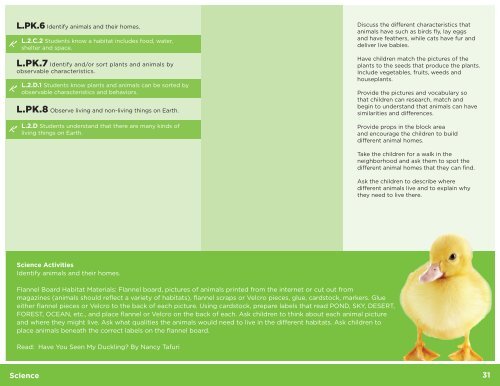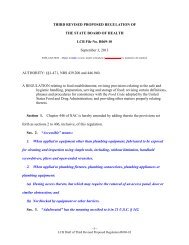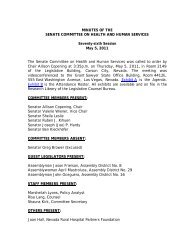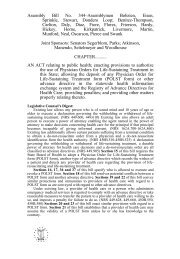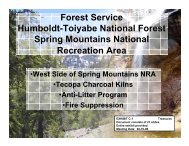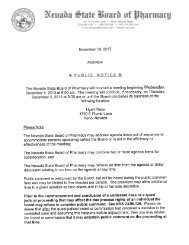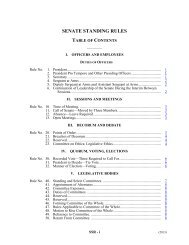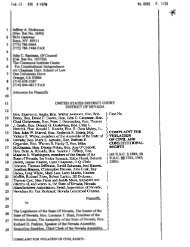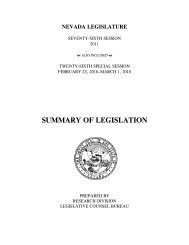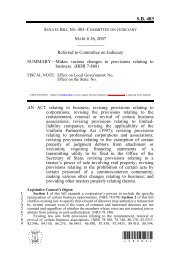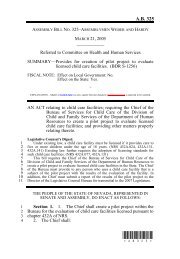Nevada Pre-Kindergarten Standards
Nevada Pre-Kindergarten Standards
Nevada Pre-Kindergarten Standards
Create successful ePaper yourself
Turn your PDF publications into a flip-book with our unique Google optimized e-Paper software.
L.PK.6 Identify animals and their homes.<br />
L.2.C.2 Students know a habitat includes food, water,<br />
shelter and space.<br />
L.PK.7 Identify and/or sort plants and animals by<br />
observable characteristics.<br />
L.2.D.1 Students know plants and animals can be sorted by<br />
observable characteristics and behaviors.<br />
L.PK.8 Observe living and non-living things on Earth.<br />
L.2.D Students understand that there are many kinds of<br />
living things on Earth.<br />
Science Activities<br />
Identify animals and their homes.<br />
Flannel Board Habitat Materials: Flannel board, pictures of animals printed from the internet or cut out from<br />
magazines (animals should reflect a variety of habitats), flannel scraps or Velcro pieces, glue, cardstock, markers. Glue<br />
either flannel pieces or Velcro to the back of each picture. Using cardstock, prepare labels that read POND, SKY, DESERT,<br />
FOREST, OCEAN, etc., and place flannel or Velcro on the back of each. Ask children to think about each animal picture<br />
and where they might live. Ask what qualities the animals would need to live in the different habitats. Ask children to<br />
place animals beneath the correct labels on the flannel board.<br />
Read: Have You Seen My Duckling? By Nancy Tafuri<br />
Science<br />
Discuss the different characteristics that<br />
animals have such as birds fly, lay eggs<br />
and have feathers, while cats have fur and<br />
deliver live babies.<br />
Have children match the pictures of the<br />
plants to the seeds that produce the plants.<br />
Include vegetables, fruits, weeds and<br />
houseplants.<br />
Provide the pictures and vocabulary so<br />
that children can research, match and<br />
begin to understand that animals can have<br />
similarities and differences.<br />
Provide props in the block area<br />
and encourage the children to build<br />
different animal homes.<br />
Take the children for a walk in the<br />
neighborhood and ask them to spot the<br />
different animal homes that they can find.<br />
Ask the children to describe where<br />
different animals live and to explain why<br />
they need to live there.<br />
31


